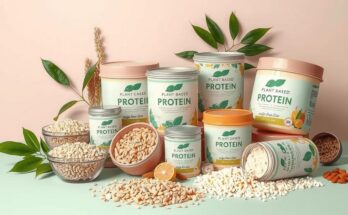The global health and wellness food market is poised to experience tremendous growth, anticipated to increase by USD 627.6 billion between 2025 and 2029, as reported by Technavio. This surge, reflecting a remarkable compound annual growth rate (CAGR) of 9.8%, is driven by a widespread adoption of healthy eating habits and preferences for prebiotic and probiotic foods. Although the market is thriving, high costs of health-oriented products pose a challenge for consumers.
Prominent players in this diverse market include notable brands such as Amy’s Kitchen Inc., Danone, and Nestle. The landscape is fragmented, with significant contributions from various regions, especially the Asia-Pacific, which accounts for 33% of market activity. The report identifies key trends like organic foods, natural ingredients, gluten-free options, and a growing predilection for plant-based products, all catering to health-conscious consumers.
The driving force behind this market expansion centres on increased consumer awareness regarding nutrition. Products rich in probiotics, antioxidants, and superfoods are in high demand. Moreover, trends favouring clean-label products, sustainable sourcing, and innovative packaging are reshaping what consumers expect from their food choices, presenting opportunities for brands willing to adapt to these evolving preferences.
Despite its growth, the market struggles with the availability of diverse products, such as prebiotics, adaptogens, and low-glycemic foods. Brands face pressure to meet specific dietary needs while ensuring their offerings remain accessible. The emphasis on natural, organic options often leads to higher prices, with organic foods typically costing around 60% more than conventional items due to intensive production processes.
In terms of segmentation, health and wellness food products include naturally healthy foods, functional foods, and organic items, distributed both offline and online. This categorisation highlights the changing consumer behaviours as they seek out products that avoid artificial additives. The focus remains steadfast on functional foods that provide additional health benefits and cater to various dietary lifestyles, such as veganism and gluten intolerance.
Technavio’s comprehensive report details the transformative impact of AI on consumer trends, helping companies stay ahead in this fast-evolving market. As innovative techniques reshape competitive dynamics, the health and wellness food market continues to burgeon, inviting consumers to indulge healthier lifestyles enriched with sustainability and transparency.
The health and wellness food market is projected to grow by USD 627.6 billion from 2025 to 2029, driven by healthy eating habits and trends toward organic and probiotic foods. Companies like Amy’s Kitchen and Nestle lead this fragmented market, predominantly in the Asia-Pacific region. Although there are challenges related to costs and product diversity, the focus on natural and sustainable options provides a pathway for future growth.
The health and wellness food market is set for remarkable growth driven by an increasing demand for nutritious, sustainable options. Key trends like organic foods, probiotics, and clean-label products are reshaping consumer expectations. Despite challenges related to pricing and product diversity, the market remains resilient, poised to meet the evolving needs of health-conscious shoppers through innovation and adaptation. With significant contributions from various global players, the market landscape is vibrant and diverse.
Original Source: www.prnewswire.com



